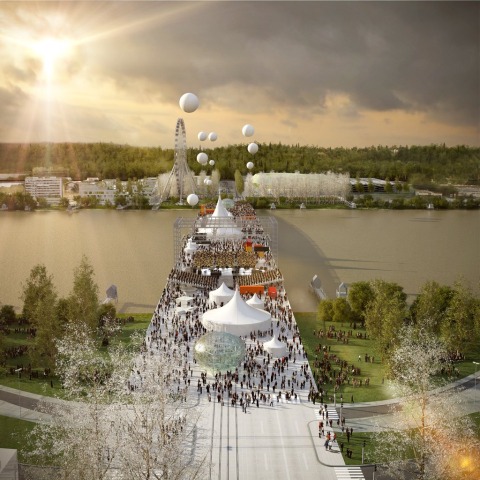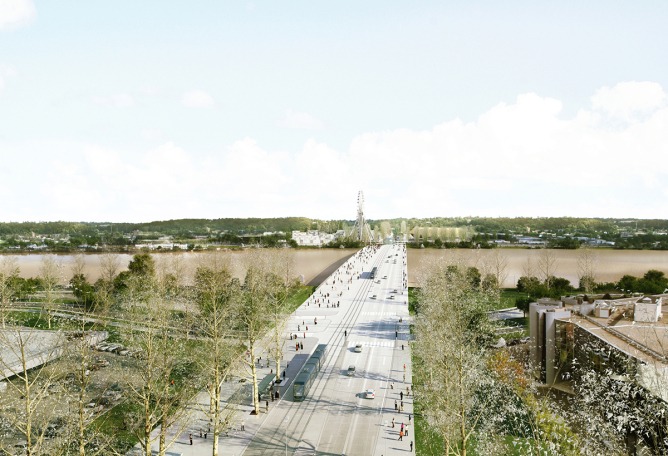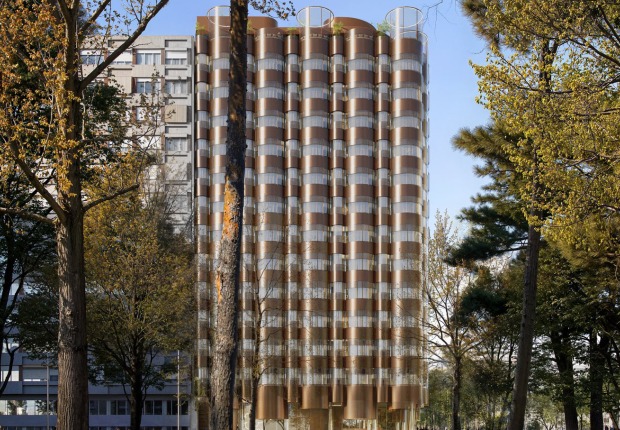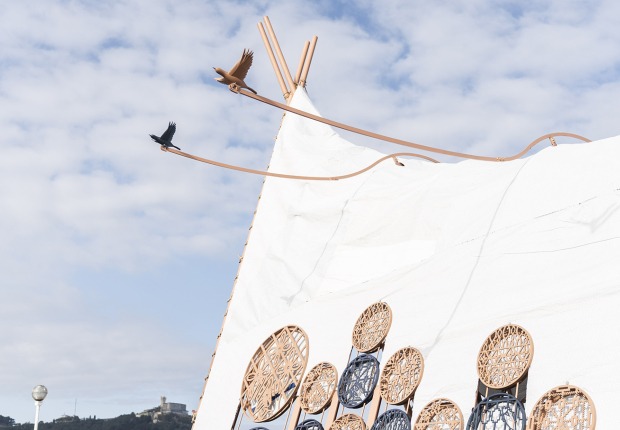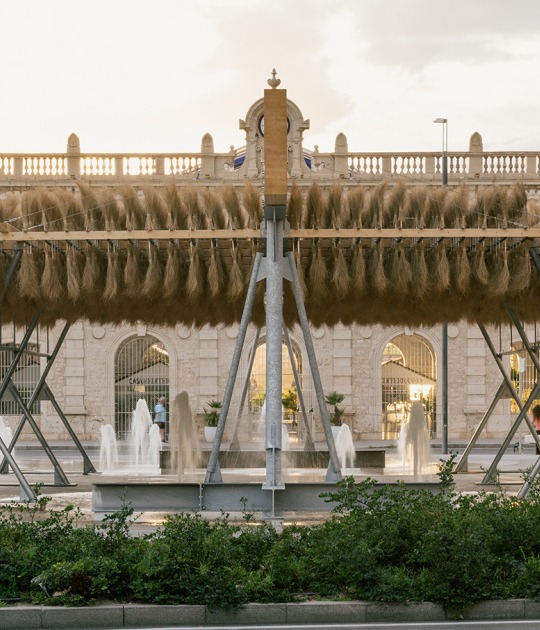OMA he is again on news headlines about architecture on this week as one of the final three firms up for realizing axel springer’s media campus in berlin and now the office led by Rem Koolhaas as winner to design the ‘Pont Jean-Jacques Bosc (previously in METALOCUS)’ in Bordeaux, France.
Clément Blanchet, director of OMA France: “The bridge itself is not the ‘event’ in the city, but a platform that can accommodate events of the city. We wanted to provide the simplest expression – the least technical, least lyrical, but the most concise and effective structural solution.”
Positioned at the heart of the Euratlantique project, Pont Jean-Jacques Bosc provides a link between the municipalities of Bègles and Floriac. But more than simply connecting two points of land separated by water, the bridge itself also offers a generous new public space in the city.
Vincent Feltesse, president of the Urban Community of Bordeaux: “It is an extraordinary architectural gesture. More than a bridge, it is an urban planning intervention in the heart of the Euratlantique project.”
Its considerable 44m by 545m expanse, a continuous surface stretching well beyond the banks of the river, seamlessly connects to the land. The gently sloping surface enables a pedestrian promenade while still allowing the necessary clearance for boats beneath. All traffic modes – including private cars, public transport, bicycles and foot traffic – are accommodated by its width, with the largest allowance devoted to pedestrians.
The project was developed in collaboration with engineers WSP, the landscape architect Michel Desvigne, the consultant EGIS, and the light design agency Lumières Studio.
OMA has won an international competition to design Pont Jean-Jacques Bosc, a bridge across the river Garonne in Bordeaux, France, that will link the municipalities of Bègles and Floriac.
OMA's stripped-down design with 44m by 545m for the Pont Jean-Jacques Bosc attempts to rethink the civic function and symbolism of a 21st century bridge. It is scheduled for completion in 2018.
OMA's stripped-down design with 44m by 545m for the Pont Jean-Jacques Bosc attempts to rethink the civic function and symbolism of a 21st century bridge. It is scheduled for completion in 2018.
More information
Published on:
December 20, 2013
Cite:
"OMA has won the competition to design Pont Jean-Jacques Bosc" METALOCUS.
Accessed
<https://www.metalocus.es/en/news/oma-has-won-competition-design-pont-jean-jacques-bosc>
ISSN 1139-6415
Loading content ...
Loading content ...
Loading content ...
Loading content ...
Loading content ...
Loading content ...
Loading content ...
Loading content ...
Loading content ...
Loading content ...
Loading content ...
Loading content ...
Loading content ...
Loading content ...
Loading content ...
Loading content ...
Loading content ...
Loading content ...
Loading content ...
Loading content ...
Loading content ...
Loading content ...
Loading content ...
Loading content ...
Loading content ...
Loading content ...
Loading content ...
Loading content ...
Loading content ...
Loading content ...
Loading content ...
Loading content ...
Loading content ...
Loading content ...
Loading content ...
Loading content ...
Loading content ...
Loading content ...
Loading content ...
Loading content ...
Loading content ...
Loading content ...
Loading content ...
Loading content ...
Loading content ...
Loading content ...
Loading content ...
Loading content ...
Loading content ...
Loading content ...
Loading content ...
Loading content ...
Loading content ...
Loading content ...
